
Catalysts
Scope & Guideline
Transforming Ideas into Catalytic Breakthroughs
Introduction
Aims and Scopes
- Environmental Catalysis:
Research on catalysts aimed at the degradation of pollutants in air and water, including photocatalytic processes that utilize sunlight for wastewater treatment and the removal of hazardous compounds. - Energy Conversion and Storage:
Studies on catalysts for hydrogen production, carbon dioxide reduction, and the development of renewable energy technologies, including fuel cells and biofuels. - Biocatalysis and Green Chemistry:
Exploration of enzyme-catalyzed reactions and sustainable catalytic processes that utilize renewable resources and minimize environmental impact. - Nanocatalysts and Advanced Materials:
Development and characterization of nanostructured catalysts, including metal-organic frameworks (MOFs) and carbon-based materials, for enhanced catalytic performance. - Catalytic Mechanisms and Kinetics:
In-depth investigations into the mechanisms of catalytic reactions, including the use of computational methods to predict catalytic behavior and optimize performance. - Heterogeneous and Homogeneous Catalysis:
Research covering both types of catalysis, focusing on the design, synthesis, and application of catalysts for various chemical transformations.
Trending and Emerging
- Photocatalysis:
There is a growing emphasis on photocatalytic processes, particularly those utilizing sunlight for pollutant degradation and hydrogen production. Research is increasingly focused on developing efficient photocatalysts that can operate under visible light. - Biomass and Waste Valorization:
Research on the catalytic conversion of biomass and waste materials into valuable chemicals and fuels is gaining traction, reflecting a global push towards circular economies and sustainable resource management. - Electrocatalysis:
The field of electrocatalysis, particularly for CO2 reduction and hydrogen evolution, is rapidly expanding. This includes advancements in materials that enhance electrocatalytic performance and stability. - Metal-Organic Frameworks (MOFs):
The application of MOFs as catalysts is on the rise, driven by their tunable structures and functionalities, which allow for enhanced catalytic activities in various reactions. - Machine Learning and Computational Catalysis:
The integration of machine learning techniques to predict catalytic behavior and optimize catalyst design is emerging as a significant trend, enhancing the efficiency of catalyst development. - Sustainable Catalytic Processes:
There is a notable increase in research focused on green chemistry principles, including the use of environmentally friendly solvents and renewable feedstocks in catalytic processes.
Declining or Waning
- Traditional Homogeneous Catalysis:
There has been a noticeable reduction in research dedicated to conventional homogeneous catalytic processes, as interest shifts towards more sustainable heterogeneous systems. - Petroleum Refining Catalysis:
Research specifically targeting traditional petroleum refining processes is waning, likely due to the growing emphasis on alternative energy sources and sustainable fuels. - Basic Research on Catalysis without Application Focus:
Papers that focus solely on fundamental catalytic science without direct applications or implications in industry or environmental science show a decline, as the journal increasingly prioritizes practical applications. - Low-Temperature Catalytic Processes:
Interest in low-temperature catalytic processes, which were previously more common, appears to be decreasing as researchers seek higher efficiency and performance at elevated temperatures. - Single-Use Catalysts:
The trend towards developing catalysts that are recyclable or have enhanced stability is overshadowing interest in single-use catalysts, reflecting a shift towards sustainability.
Similar Journals
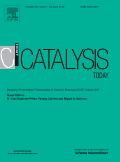
CATALYSIS TODAY
Transforming Ideas into Impactful ResearchCATALYSIS TODAY is an esteemed journal published by Elsevier, specializing in the vibrant field of catalysis and its applications in chemical engineering. With the ISSN 0920-5861 and E-ISSN 1873-4308, it has continually contributed valuable research since its inception in 1987 and is set to maintain its influence through 2025. Hailing from the Netherlands, this journal stands out with a notable Q2 quartile ranking in catalysis and a Q1 ranking in miscellaneous chemistry as of 2023, reflecting its rigorous selection of impactful and innovative studies. Its Scopus rankings further substantiate its excellence, highlighting its position in the 89th percentile of general chemistry and 77th percentile in catalysis. CATALYSIS TODAY aims to disseminate cutting-edge findings, fostering exchange among researchers, professionals, and students in the catalysis community. By presenting high-quality research articles, reviews, and case studies, it plays a pivotal role in advancing knowledge and sparking discussions that drive future developments in the field.
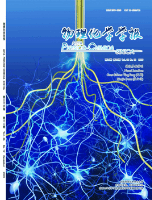
ACTA PHYSICO-CHIMICA SINICA
Pioneering insights in Physical and Theoretical Chemistry.ACTA PHYSICO-CHIMICA SINICA, published by PEKING UNIV PRESS, is a prestigious journal focused on the fields of Physical and Theoretical Chemistry, boasting an impressive impact factor as reflected in its 2023 Q1 ranking in this domain, placing it among the top 5% of journals in the subject area. With its origins dating back to 1996, the journal serves as a vital platform for the dissemination of cutting-edge research, encompassing a broad range of topics from molecular dynamics to thermodynamics and quantum chemistry. Researchers, professionals, and students are provided with valuable insights through peer-reviewed articles, making it an indispensable resource for advancing knowledge and sparking innovation in the discipline. While this journal does not offer Open Access options, its rigorous editorial standards and influential contributions continue to shape the landscape of Physical and Theoretical Chemistry globally. For submissions or further information, please refer to the editorial office at Peking University, Chemistry Building, Beijing, China.
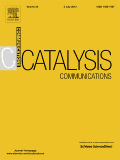
CATALYSIS COMMUNICATIONS
Uniting Experts in the Quest for Catalytic ExcellenceCATALYSIS COMMUNICATIONS is a prestigious journal published by Elsevier, focusing on advancements in the field of catalysis, an essential component of chemical engineering and process technology. With an ISSN of 1566-7367 and an E-ISSN of 1873-3905, this journal is dedicated to the rapid publication of original research and innovative findings that drive progress in catalysis. Recognized for its quality, CATALYSIS COMMUNICATIONS holds a Q2 ranking within the categories of Catalysis, Chemistry (miscellaneous), and Process Chemistry and Technology as of 2023, positioning itself in the upper tier of scholarly publications in its field. The journal has made significant contributions to the scientific community since its inception in 2000, with ongoing research until 2024. While it currently operates without an open-access option, the platform ensures rigorous peer review, maintaining high standards for publication. By engaging with the latest research, CATALYSIS COMMUNICATIONS serves as a vital resource for researchers, professionals, and students, fostering innovation and collaboration in chemical sciences.

APPLIED CATALYSIS A-GENERAL
Fostering Breakthroughs in Catalytic Science and Applications.Applied Catalysis A-General is a premier journal published by Elsevier that serves as a vital resource in the fields of catalysis, process chemistry, and technology. Founded in 1991, this esteemed journal has garnered considerable recognition, reflected in its classification in the Q2 quartile for both catalysis and process chemistry in 2023, as well as its notable rankings within the Scopus database, placing it among the top 20 journals in related disciplines. With an ISSN of 0926-860X and an E-ISSN of 1873-3875, the journal provides a platform for researchers and professionals to disseminate cutting-edge research findings, facilitate knowledge transfer, and foster innovation in the field. While not an open-access journal, it remains accessible through institutional subscriptions, ensuring that critical findings reach a broad audience. The journal's objectives include advancing the understanding of catalytic processes and their applications, making it an indispensable tool for those engaged in this dynamic area of study. Applied Catalysis A-General continues to play a vital role in shaping the future of catalysis, contributing to both scientific progression and practical advancements in various industries.
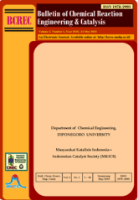
Bulletin of Chemical Reaction Engineering and Catalysis
Pioneering Research in Catalysis and Reaction EngineeringBulletin of Chemical Reaction Engineering and Catalysis is a distinguished open-access journal published by UNIV DIPONEGORO, focusing on pivotal advancements in the fields of chemical reaction engineering and catalysis. Since its inception in 2008, this journal has served as a vital platform for disseminating cutting-edge research, catering to a diverse readership that includes researchers, professionals, and students in chemical engineering and related disciplines. With its dedication to publishing valuable insights, the journal has been indexed in Scopus and boasts respectable rankings across various categories, including Q3 in Chemical Engineering (miscellaneous) and Q4 in Catalysis as of 2023. It continues to foster scholarly dialogue and collaboration by providing an accessible means for contributors to share their findings. Operating from Semarang, Indonesia, this journal underscores its commitment to advancing knowledge in chemical sciences, making it an essential resource for those engaged in the study and application of chemical processes.

CHINESE JOURNAL OF INORGANIC CHEMISTRY
Connecting Scholars through Inorganic InnovationsThe CHINESE JOURNAL OF INORGANIC CHEMISTRY, published by the esteemed CHINESE CHEMICAL SOC, stands as a pivotal resource for researchers and professionals in the field of inorganic chemistry. With an ISSN of 1001-4861, this journal has been disseminating cutting-edge research since its establishment in 1996 and continues to influence the scientific community with its commitment to high-quality publications. Although currently classified in the Q4 quartile for Inorganic Chemistry and ranked 70th out of 79 in its category according to Scopus, the journal serves as a platform for innovative studies that push the boundaries of inorganic materials and compounds. While it operates on a traditional access model, the journal is dedicated to fostering scientific discourse and collaboration among scholars in China and beyond, making it an essential reference for anyone involved in inorganic chemistry research.

Chem Catalysis
Exploring groundbreaking discoveries in chemical catalysis.Chem Catalysis is a leading academic journal published by CELL PRESS, specializing in the diverse and dynamic field of chemistry. Since its inception in 2021, this open-access journal has rapidly ascended to prominence, holding Q1 quartile rankings in prestigious categories including Chemistry (Miscellaneous), Organic Chemistry, and Physical and Theoretical Chemistry. With its Scopus rankings placing it in the top tiers—Rank #14 in Organic Chemistry and Rank #12 in Miscellaneous Chemistry—Chem Catalysis serves as a vital platform for disseminating innovative research and catalysis science. Researchers and professionals seeking to stay abreast of cutting-edge developments will find this journal indispensable for advancing their knowledge and contributions to the field. Located in Cambridge, Massachusetts, Chem Catalysis is committed to fostering collaboration and innovation in the chemical sciences, paving the way for breakthroughs that address global challenges.
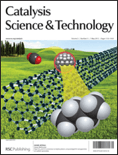
Catalysis Science & Technology
Pioneering Discoveries in Catalytic ScienceCatalysis Science & Technology is a leading journal published by the Royal Society of Chemistry, dedicated to advancing the field of catalysis through high-quality research and innovation. Established in 2011, this journal serves as a vital platform for researchers, professionals, and students interested in the latest developments in chemical engineering and catalytic processes. With an impressive Q2 ranking in Catalysis for 2023, the journal is recognized for its significant contributions to the discipline, evidenced by its respectable Scopus Rank of #21 out of 68 in the category and a 69th percentile standing. The journal is committed to disseminating original research that enhances our understanding of catalysis, facilitating knowledge exchange and collaboration within the scientific community. Even without Open Access, Catalysis Science & Technology remains pivotal in shaping innovations that drive forward both academic inquiry and industrial applications, making it an essential resource for anyone involved in this dynamic field.

Catalysis in Industry
Empowering researchers to transform chemical engineering.Catalysis in Industry, published by MAIK NAUKA-INTERPERIODICA, is a pivotal journal in the field of chemical engineering and catalysis. With its ISSN 2070-0504 and E-ISSN 2070-0555, this journal has been dedicated to advancing the understanding and application of catalytic processes in industrial settings since its inception in 2010. Despite its Q4 ranking in the category of Catalysis as of 2023 and a Scopus rank of #61/68, the journal serves as a valuable platform for researchers and practitioners to disseminate innovative ideas and findings that contribute to the evolution of catalysis technology. Published in Russia, Catalysis in Industry aims to bridge the gap between academic research and industrial practice, providing Open Access options to facilitate widespread accessibility and encourage a collaborative approach to chemical engineering challenges. As the industry grapples with the demand for sustainable solutions and efficient processes, this journal remains a critical resource for the academic community, aspiring professionals, and students eager to deepen their knowledge in catalytic applications.
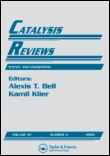
CATALYSIS REVIEWS-SCIENCE AND ENGINEERING
Fostering Excellence in Chemical Engineering and CatalysisCATALYSIS REVIEWS - SCIENCE AND ENGINEERING, published by Taylor & Francis Inc, is a leading journal in the field of catalysis, providing a vital platform for the dissemination of rigorous research and comprehensive reviews from 1968 to the present. With an impressive Q1 ranking in multiple categories, including Catalysis and Chemistry, this journal stands out as an essential resource for professionals, researchers, and students alike. Its high impact factor and esteemed Scopus ranks — including 3rd in Chemical Engineering: Process Chemistry and Technology — highlight the journal's influence and prestige within the scientific community. While primarily a subscription-based publication, the journal’s commitment to advancing the understanding of catalytic processes continues to foster innovation in various industrial applications, making it indispensable for anyone engaged in the fields of chemical engineering and applied chemistry.